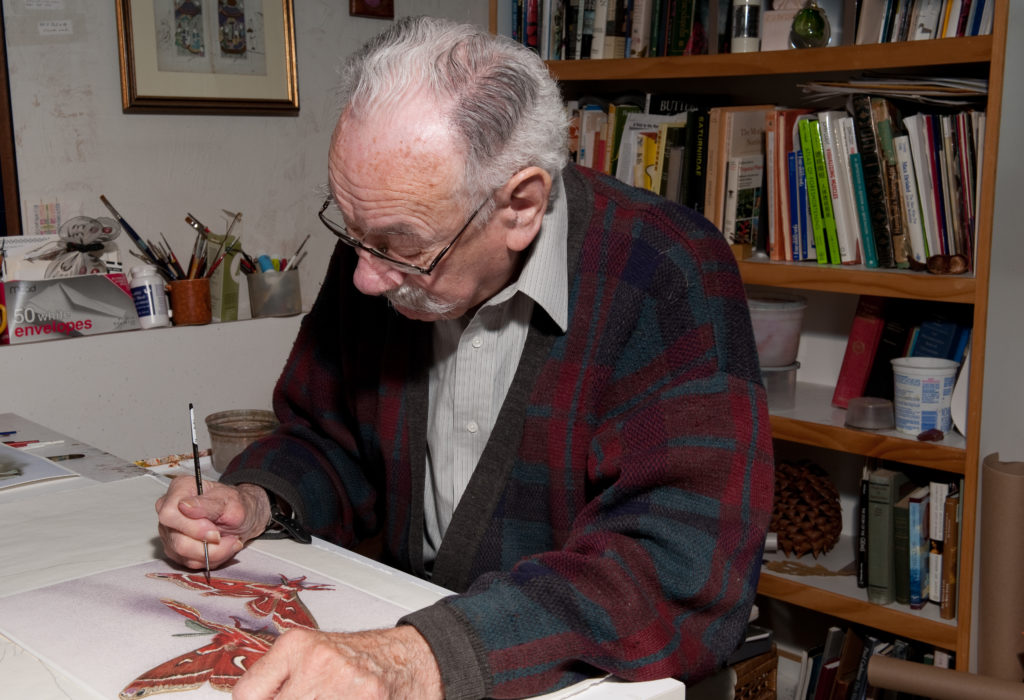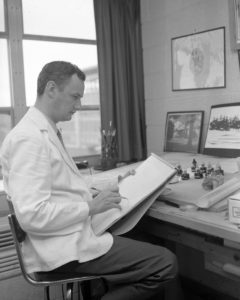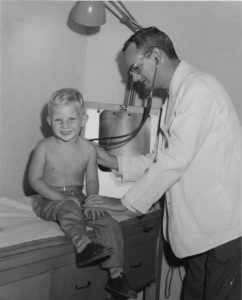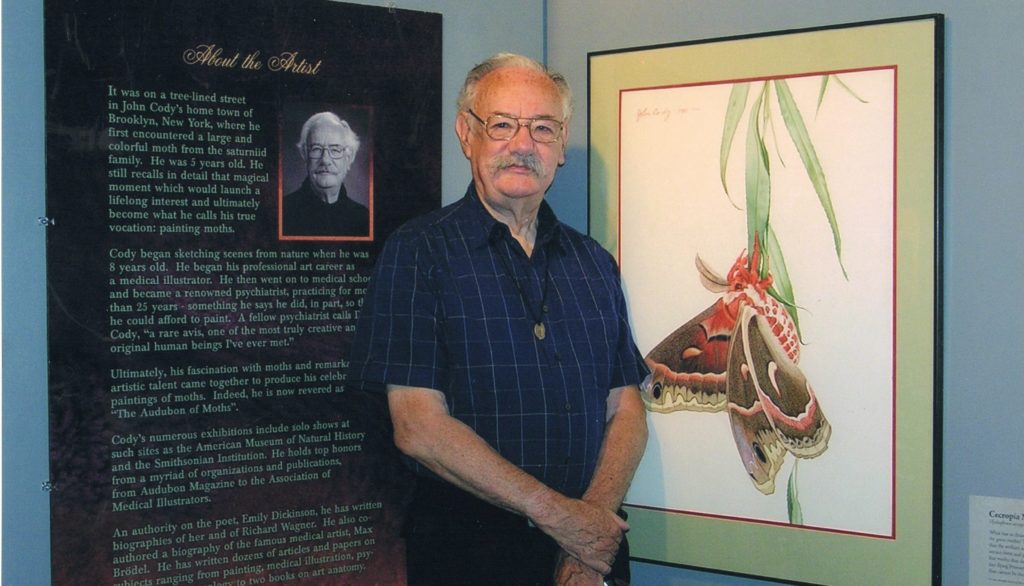
Frequently when the proud owner of a painting is asked about the life of the artist, the answer is thin. There are exceptions: Van Gogh was a preacher who struggled to save the souls of mineworkers. Gauguin after a brilliant career on the Danish stock exchange, labored on the Panama Canal and roamed the primitive islands of the Pacific. Cellini’s life was loaded with adventure and intrigue. But mostly the lives of artists have a single focus – their art.
John Cody was an exception. Born in Brooklyn in 1925, he began at age five admiring and drawing moths: the polyphemus, io, cecropia, promethean and others. Not collecting and killing: admiring, drawing and falling in love with them. The Cody family once lost a nice cocktail shaker when John, as a small boy, could not remove the top when it was time to release the moth inside. No problem for John: in a welter of shattered glass the moth went free.
From his earliest years, regardless of which goal he was pursuing, “Some autonomous gland in me,” he said, “seemed to secrete drawings and paintings of my favorite creatures.” Behind it all was the hope that he would someday become the “Audubon of moths.” One of the milestones in that ambition was achieved when Gloria Vanderbilt, a woman of ranging interests, recognized the unique value of his work and recommended it to Audubon  magazine. The publishers concurred and Cody’s article and eleven of his paintings appeared in the May 1986 issue.
magazine. The publishers concurred and Cody’s article and eleven of his paintings appeared in the May 1986 issue.
Moths were but one of the pursuits of John Cody.
When he tried to qualify for entrance to a prep school, he so badly misinterpreted an Emily Dickinson poem that he was not accepted. Taking a lesson from this seemingly unlucky encounter, Cody made a study of the life of and works of our greatest poet, in which he found all the color, richness of texture and enigmatic quality of moths. This resulted in his widely acclaimed book, After Great Pain: The Inner Life of Emily Dickinson, published in 1972 by the Harvard University Press.
After college and art courses at Pratt Institute, Cody went to the Johns Hopkins’ Department of Art as Applied to Medicine and became a medical and scientific illustrator. Then came an expedition to the jungles of Trinidad as staff artist under the direction of the great naturalist and deep-sea explorer, Dr. William Beebe. Cody finished his career as a medical illustrator at the University of Arkansas for Medical Sciences, drawing “hearts and livers” for five years.
Then, tired of producing charts and graphs which were more and more taking the place of medical illustrations, he enrolled in medical school, receiving his M.D. During that time he married. His wife, Dorothy, also a physician and their three children are in the medical field: one a veterinarian, one a psychiatric social worker and one a psychiatrist.
For 21 years Cody practiced psychiatry at the High Plains Mental Health Center in Hays, Kansas, most of the time as the Center’s executive and medical director . He retired in 1986.
. He retired in 1986.
Not content with practicing psychiatry on a daily basis, directing the development of a major clinic, continuing his study and painting of moths, and writing and publishing a book on Dickinson, he found time for two other interests. One was a book of art-anatomy entitled Atlas of Foreshortening, published by Van Nostrand Reinhold in 1984 (a second editions was printed in 2002 by Wiley & Sons). The other, biographies of composer Richard Wagner and medical artist Max Broedel.
It is most likely that he chose Wagner for the same reasons that he chose the turmoils of the soul over the more straight-forward areas of medicine, and the intricate tapestry of the moth over the more simple butterfly – not Rossini of the airy “Barber of Seville,” not Puccini of the light and pretty “Madame Butterfly,” but Wagner, the 19th century master of metaphysical, dark mysteries of Odin, the Valkyries and Valhalla.
Such is the depth, energy and intensity that is concentrated in every exquisite Cody print. Dr. John Cody was a rare man. So are his prints. The American Museum of Natural History in New York recognized this when they honored him with a one-man show. Similarly, the Audubon Society recognized it….as does an elite group of art connoisseurs who collect paintings and prints from the “Audubon of moths.”